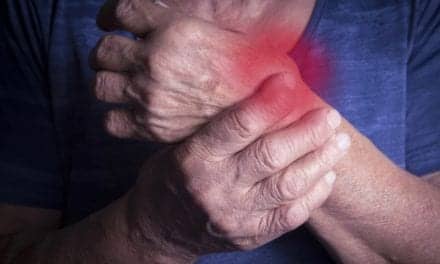By Peter Vranes
According to the U.S. Centers for Disease Control and Prevention, 70% of all medical decisions doctors make are based on lab diagnostics. The usual process of lab diagnostics goes like this: the patient has their blood drawn, this sample is then sent to a lab for analysis, and after a few hours or days, results come back. Finally, these results are sent to a doctor who uses them to make treatment decisions and diagnoses. This process has been unchanged for decades and impedes doctors who need trend data and real-time insights when treating complex, and fast-moving conditions. But DNA-based sensors could change that.
The holy grail of the diagnostics industry has always been a single technology that can monitor any target continuously and in real time, thus providing the trend data and clinical insights presently missing. Continuous glucose monitors (CGMs) come close with diabetes. They have demonstrated the power of continuous data to transform diabetes management, and in the process, three companies have together carved out a $10 billion per year industry. But where are similar technologies for diseases beyond diabetes?
Enter DNA-based Sensing
One of the biggest limitations of CGMs is their inability to measure any diagnostic target beyond glucose. DNA-based sensing is a platform technology that overcomes this critical limitation because it can measure any diagnostic target continuously and in real time, fulfilling the holy grail of biosensing.
This journey of discovery took decades, with many technologies coming close but ultimately falling short. A solution emerged when Professor Kevin Plaxco, a biological physicist at the University of California Santa Barbara, asked the question, “How does our body sense different targets?”
Our body does this using proteins that change shape in the presence of their target. Drawing upon this inspiration, Professor Plaxco used synthetic DNA-based sensors to mimic the same mechanism as used in our body. He then demonstrated the technology by developing over a dozen different sensors that worked in animal models. This more than doubled the total number of continuous sensors ever developed and shown to work on the body, demonstrating the scalable power of a platform technology.
A Lab-on-a-Patch: How it Works
Nutromics secured the worldwide license for this technology in 2020. We then applied these DNA-based sensors onto the tips of 2mm (about 0.08 in)-long microneedles on a wearable device to enable continuous access to interstitial fluid (ISF), the same fluid used by CGMs. Application to the skin is easy and minimally invasive. The device is being designed to transmit diagnostic data continuously via Bluetooth into hospital information systems.
Solving Problems for the Deadliest Disease States
If you could sense any target continuously and in real time, what problems in healthcare would you solve? Our company is tackling some of the deadliest disease states in the hospital. These include therapeutic drug monitoring (TDM), the practice of maintaining personalized and therapeutic concentration of medication, for drugs such as vancomycin; acute kidney injury, one of the 10 leading causes of death in the US; sepsis, which contributes to 20% of all global deaths; and finally, cardiovascular disease, which takes about 18 million lives globally each year.
Our first product is a wearable with a vancomycin sensor. Vancomycin is an antibiotic used for treating severe infections like sepsis. This antibiotic is challenging to dose because it has a narrow therapeutic window and high toxicity, and doctors get extremely limited data on a patient’s blood vancomycin levels. There is an unmet clinical need here that DNA-based sensors can fill. They can provide continuous and real-time vancomycin concentration levels, allowing doctors to adjust the antibiotic to reach the therapeutic range and stay out of the toxic range.
Another area where DNA-based sensors can have a significant impact is the diagnosis of a heart attack. Troponin is a protein that is significantly elevated in the blood when the heart muscle is damaged, as in a heart attack. If someone comes into the emergency room suffering from chest pain, the protocol includes testing for troponin to confirm the diagnosis. Each minute after a heart attack, more heart tissue is damaged or dies. Yet it’s estimated that it takes, on average, five to six hours to reach a diagnosis. Continuous monitoring of troponin can provide early trend information, bringing diagnosis time down to mere minutes, and saving lives in the process.
The Future of Healthcare
DNA-based sensing is a breakthrough in biosensing with the ability to address the foundational challenges of healthcare and diagnostic testing methodologies.
In the future, we would expect DNA-based biosensors to encompass not only the acute hospital setting, but also expand to point of care, general lab testing, and consumer use for the prevention of disease in a healthy population—resolving the issues of scalability and accessibility to developed and developing countries.
Peter Vranes is the CEO of Nutromics.




